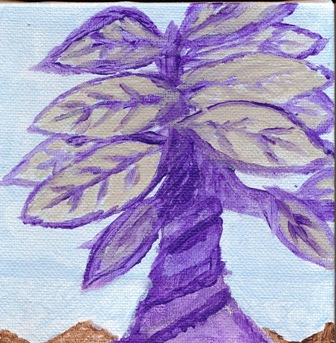Raliok
The Raliok trees range in size from half a kilometer to a kilometer high, with thick black-brown trunks and between 3 to 5 layers of branches. The branches are thick in the bottom layers, but thinner in the top layers. Huge, semi-translucent leaves drape down from the branches in colors of gold or silvery-white with violet veins. In the late summer and fall, the leaves turn a darker silver to prepare for the winter months. Parts of the roots protrude from the ground and are covered in moss and bushes and vines, and resemble miniature hills. Rocks churned up from the roots litter the forest floor around the trees, often forming large outcroppings over time. Bushes and flowers cover the forest floor, with some flowers being several feet tall -- the tallest nearly twenty feet high with long, yellow petals open toward the shafts of sunlight that filter down through the Raliok leaves. In the areas that receive more light, fruit trees grow, most reaching a height of around ten to fifteen feet in height. They grow in clusters, actually being of the same tree, as their roots systems are all connected and tap into the nutrient and water system of the nearest Raliok root.
Once every decade, the leaves crumble down from the Raliok branches in a leaf-rain, and new leaves grow in their place (the new leaves take about a month to grow). The debris from the leaf-rain often is swept away by small forest fires, that replenish the forest nutrients every decade or so. These trees rarely if ever die by fire or lightning, though their bark can be scorched a bit. Deep underground, their thick roots extend far, digging into layers of plant debris and ash from previous Raliok trees that have died and been slowly pushed deep into the earth; there are also underground lakes that they draw water from, and these are replenished in the torrential rain storms, especially in the spring and summer parts of the year. The lakes also are replenished from snow melt from the northern parts of Vera, where swollen rivers flood the land and the water seeps into underground cavities, forming underground rivers. A Raliok tree can live for a few millennium, and often die slowly, toppling as its roots dry out. The crash of a dead Raliok tree is rare and can destroy a whole swathe of land via either being crushed or through the resulting earthquake, taking a centuries to decompose and saturate the earth with its former nutrients. A new Raliok will often grow in the remains of a dead one, and will take several centuries to reach full adulthood height.
The Raliok are all connected in a vast network of roots that cover the entire swathe of the forests that they inhabit. It is rare to see a lone Raliok that is not near the main forest.
Basic Information
Biological Traits
Range in size from half a kilometer to a kilometer high, with thick black-brown trunks and several dozen layers of branches. The branches are thick in the bottom layers, but thinner in the top layers. Huge, semi-translucent leaves drape down from the branches in colors of pale gold, silver, or transparent with violet veins.
Ecology and Habitats
Additional Information
Lifespan
600 to 1000 years
Average Height
0.5 to 1 kilometer
Average Weight
100 to 400 tons
Average Length
0.1 km
To chat with me, check out TheBird, my Mastodon Profile






Comments